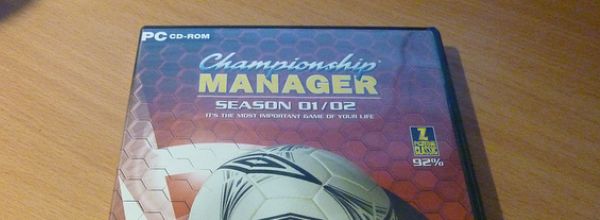How much of your working day do you spend looking for stuff?
My guess is it’s a lot.
Labs have a high turnover of researchers whose individual projects require dozens of bottles of solutions and heaps of assorted lab paraphernalia.
And in most labs, everyone shares communal storage spaces.
The result is often a remarkable build-up of mess and clutter which, when you stop to think about it, really delays your research—those minutes really add up and probably add up to weeks of time just wasted hunting around!
So maybe now is the time to fight back against the mess. Here are ten tips to help you organize your lab space to minimize inefficiencies and maximize your productivity in the lab.
1. Arrange Your Lab Space with Stations
Keep all supplies and tools for a process or protocol together.
One example is a weigh station near the chemical supply with an analytical balance, weighing dishes, weighing boats, and lab scoops. You have everything you need to measure out any quantity of a chemical in one place.
If the procedure has multiple steps, arrange the equipment from left to right by step for intuitive use. You can even demarcate the location of each step or sub-step on the lab bench surface with label tape so everyone knows where all pieces of equipment “live”.
2. Group Most-Used Supplies in Clear Boxes
Clear boxes are useful because they:
- Maximize previous real estate on shelves.
- Hold items of many different sizes and shapes.
Furthermore, they’re clear, so you can see the stuff inside easily, and they’re easy to clean and reuse. In a small space, someone looking for a small chemical bottle on a shelf jumbled with equipment and products can lead to everything toppling down in a giant mess. Clear boxes can help avoid that!
3. Use Vertical Space
Vertical space may be overlooked when you organize your lab space. Are you using the full height available in the area?
For instance, you may have dead space under a table or bench where you could store bigger supplies. Can you stack equipment on top of one another (assuming it doesn’t damage the equipment)? Could you hang multi-use shelves or hooks for lab coats on an open wall?
4. You Can Never Have Too Many Labels!
In a shared space, labels aid in communication between lab members and may need to be in service for months or years. Labels can be used to mark the contents of a container or to demarcate areas on a shelf.
They can add notices, notifications, dates, initials, or any combination of these. You may want to purchase an inexpensive label maker for the lab so that handwriting doesn’t need to be interpreted. However, a marker on a piece of colored label tape works well too!
5. Designate an “Overflow” Space for Extra Supplies
Many supplies in a laboratory are used up quickly and require frequent restocking, such as pipette tips, cell culture flasks, or common buffers.
Keep supplies currently in use in an easy-to-access place near eye level, and also designate a space to store extra and overflow supplies. Whenever someone needs to unpack a new shipment of disposable supplies, they know where to go first.
6. Remember Ergonomics When You Organize Your Lab Space
Storing frequently-used supplies near eye level ensures that they are the easiest to see and reach. Keep items on the bench where they are the most convenient and comfortable for you. For example, it is much more comfortable to use your benchtop biohazard bin on the right side of your workstation if you are right-handed. The same principle applies to pipette tips, too.
7. Manage Freezer Contents
There are both free solutions and commercial solutions to keep a freezer inventory. A low-tech solution is to draw a diagram of the shelves inside each freestanding freezer, along with each box or container on those shelves.
Then give each box a unique identifier, such as a number or letter. On a spreadsheet, list the contents of each box along with important information regarding those samples or supplies. This spreadsheet can be shared with the lab through Google Docs and updated easily as needed.
Alternatively, you can use software such as Freezerworks or FreezerPro to maintain an accurate record of your freezer inventory. The advantage of the software solutions is the ability to save time and improve accuracy compared with a more manual system.
8. Maintain a Lab Notebook Archive
If your lab uses physical lab notebooks, you need a system to archive filled notebooks so that lab members can find old data and protocols in the future.
One solution is to keep all lab notebooks together in a file cabinet or on a shelf organized by date or lab member. Alternatively, you can use an electronic lab notebook system such as LabArchives. These systems have the added benefit of being searchable and are easier to read compared with deciphering handwriting.
9. Develop a Lab Inventory System
Do you know what to do when you receive a new supply or want to order a refill of something? It greatly improves communication within a lab group to establish a system for this and stops reagents or equipment from being misplaced or lost.
Such a system could be simple, such as a binder with printed purchase orders for recent packages, or more complex, such as a full electronic lab inventory system like eLABInventory or BrightLab. Some software solutions can integrate with electronic lab notebooks for an even smoother experience.
10. Embrace Flexible Systems
Laboratory needs change over time as projects evolve, the lab buys new equipment, or existing equipment is upgraded. Consider adjustable shelving instead of built-in cabinetry.
Furthermore, the number of people requiring bench space may grow or shrink as lab members come and go from the research group. Enduring systems, whether they are physical or electronic, are those that can expand, reconfigure, or shift over time.
Organizing Your Lab Space Summarized
That’s how to organize your lab space in a nutshell.
In addition to being more enjoyable to use, a well-organized space makes onboarding easier for new lab members. It can also reduce time wasted looking for a particular item or gathering items necessary for a protocol from a bunch of different areas.
Remember, a more productive researcher can better reach their fullest potential!
For more tips on having an organized lab space, check out our article on How to Marie Kondo Your Laboratory.
Originally published in December 2019. Revised and updated in February 2024.







